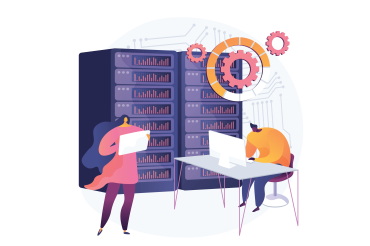Description
📅 Cisco Cybersecurity (CBRCOR 350-201)
🗓️ Duration: 3 Months
📚 Schedule: 3 Days Per Week
🕒 Session Length: 90 Minutes
💡 Total Sessions: 36
⏳Study Hours: 54
Course content
Interpret the components within a playbook
Determine the tools needed based on a playbook scenario
Apply the playbook for a common scenario such as unauthorized elevation of privilege,
DoS and DDoS, website defacement
Infer the industry for various compliance standards such as PCI, FISMA, FedRAMP, SOC,
SOX, PCI, GDPR, Data Privacy, and ISO 27101
Describe the purpose of cyber risk insurance
Analyze elements of a risk analysis (combination asset, vulnerability, and threat)
Apply the incident response workflow
Describe characteristics and areas of improvement using common incident response
metrics
Describe types of cloud environments
Compare security operations considerations of cloud platforms such as IaaS, PaaS
Recommend AI-powered data analytic techniques to meet specific needs or answer
specific questions
Describe the use of hardening machine images for deployment
Describe the process of evaluating the security posture of an asset
Evaluate the security controls of an environment, diagnose gaps, and recommend
improvement
Determine resources for industry standards and recommendations for hardening of
systems
Determine patching recommendations, given a scenario
Recommend services to disable, given a scenario
Apply segmentation to a network
Utilize network controls for network hardening
Determine DevSecOps recommendations (implications)
Describe use and concepts related to using a Threat Intelligence Platform (TIP) to
automate intelligence
Apply AI-driven threat intelligence using tools
Apply the concepts of data loss, data leakage, data in motion, data in use, and data at
rest based on common standards
Describe the different mechanisms to detect and enforce data loss prevention
techniques, Host, Network, Application, Cloud
Recommend tuning or adapting devices and software across rules, filters, and policies
Describe the concepts of security data management
Describe use and concepts of SIEM tools for security data analytics
Recommend procedural and SOAR workflows from the described issue through
escalation and the automation needed for resolution
Apply dashboard data to communicate with technical, leadership, or executive
stakeholders
Analyze anomalous user and entity behavior (UEBA) using SIEM data
Determine the next action based on user behavior alerts
Describe tools and their limitations for network analysis such as packet capture tools,
traffic analysis tools, network log analysis tools
Evaluate artifacts and streams in a packet capture file
Troubleshoot existing detection rules
Determine the tactics, techniques, and procedures (TTPs) from an attack
Analyze components in a threat model
Apply the concepts and sequence of steps in the malware analysis process:
Extract and identify samples for analysis such as packet capture or packet
analysis tools
Perform reverse engineering
Perform dynamic malware analysis using a sandbox environment
Identify the need for additional static malware analysis
Perform static malware analysis
Summarize and share results
Interpret the sequence of events during an attack based on predictive AI analysis of
traffic patterns
Determine the steps to investigate potential endpoint intrusion across a variety of
platform types such as desktop, laptop, IoT, mobile devices
Determine known Indicators of Compromise (IOCs) and Indicators of Attack (IOAs)
Determine IOCs in a sandbox environment (includes generating complex indicators)
Determine the steps to investigate potential data loss from a variety of vectors of
modality such as cloud, endpoint, server, databases, application
Recommend the general mitigation steps to address vulnerability issues
Recommend the next steps for vulnerability triage and risk analysis using industry
scoring systems such as CVSS and other techniques
Compare concepts, platforms, and mechanisms of SOAR
Interpret basic scripts such as Python
Modify a provided script to automate a security operations task
Recognize common data formats such as JSON, HTML, CSV, XML
Determine opportunities for automation, orchestration, and machine learning within a
SOAR platform
Determine the constraints when consuming APIs such as rate limited, timeouts, and
payload
Explain the common HTTP response codes associated with REST APIs
Evaluate the parts of an HTTP response (response code, headers, body)
Interpret API authentication mechanisms: basic, custom token, and API keys
Utilize Bash commands (file management, directory navigation, and environmental
variables)
Describe components of a CI/CD pipeline
Apply the principles of DevOps practices
Describe the principles of Infrastructure as Code


